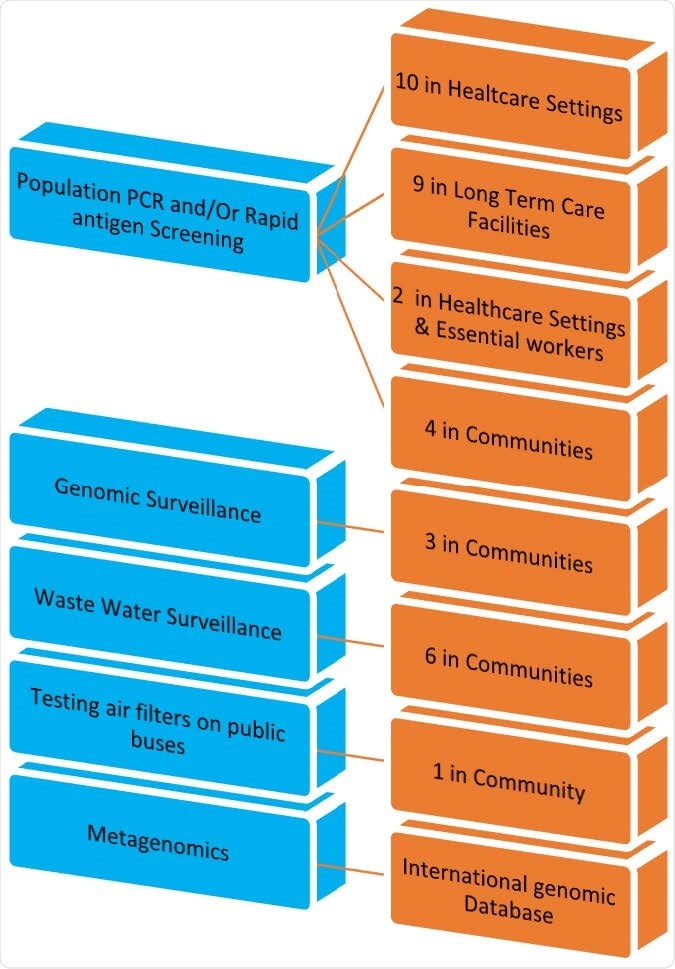To date, there have been more than 251 million confirmed cases of COVID-19 caused by the novel coronavirus severe acute respiratory syndrome coronavirus 2 (SARS-CoV-2) recorded so far, and this dreaded infectious disease has claimed over 5 million lives worldwide.
A broad collection of observational studies and randomized controlled trials (RCTs) have shown that vaccines are extremely effective in preventing COVID-19 disease.
With many countries having fully vaccinated more than half of their population (e.g., the UK), the number of vaccinated people continues to increase. As a result, nations are now shifting their focus towards population-level surveillance methods and further pivoted these methods to monitor the presence and resurgence of SARS-CoV-2 and its variants of concern (VOCs).
Although reverse transcription-polymerase chain reaction (RT-PCR) testing effectively identified new cases of SARS-CoV-2 infection, the restricted availability of these tests and slow laboratory turnaround times limited their effectiveness. Consequently, there was a surge in demand for alternative population-level testing modalities that can detect the presence and resurgence of the virus before an outbreak.

 *Important notice: medRxiv publishes preliminary scientific reports that are not peer-reviewed and, therefore, should not be regarded as conclusive, guide clinical practice/health-related behavior, or treated as established information.
*Important notice: medRxiv publishes preliminary scientific reports that are not peer-reviewed and, therefore, should not be regarded as conclusive, guide clinical practice/health-related behavior, or treated as established information.
Gathering and assessing the scientific evidence on surveillance and testing methods
Researchers at the University of Calgary Health Technology Assessment Unit investigated scientific evidence on various surveillance and testing methods to monitor the presence of the virus in a vaccinated population.
The authors of this review posted to the medRxiv* pre-print server performed an extensive search for international guidance on surveillance methods of COVID-19. They searched Ovid MEDLINE®, including Epub Ahead of Print, Embase, In-Process & Other NonIndexed Citations, EBM Reviews - Cochrane Database of Systematic Reviews, and EBM Reviews - Cochrane Central Register of Controlled Trials.
For full-text review, 68 international guidance documents were captured through a comprehensive grey literature search. A total of 26 documents met the inclusion criteria, and they yielded 7 overarching surveillance methods. Most of the 26 guidance documents were not specific to vaccinated populations, but they were included as they reported a surveillance method for COVID-19. A comprehensive search of Google and websites of international government organizations (e.g. WHO) was also conducted.
The researchers also included literature assessing surveillance in a partially vaccinated population to ensure all the relevant literature was captured. They engaged a patient partner during the review of international guidelines and the co-production of a plain-language summary for rapid assessment of primary literature. One document published by Public Health England offered guidance specific to surveillance of vaccinated populations.
Results identified new approaches to monitor post-vaccination COVID-19 cases and emerging VOCs
The study results identified five new surveillance approaches - wastewater surveillance, genomic surveillance, metagenomics, RT-PCR screening and/or a rapid antigen test, and air filter testing on public buses. The observations suggested that genomic sequencing can be used to identify variations and evolution of SARS-CoV-2 VOCs, and wastewater surveillance complements other surveillance methods.
Every identified surveillance and testing method in this study serves a distinct objective that remains consistent across jurisdictions. The intensity of the disease and the scale of testing determines the frequency of testing and the selection of the testing method.

Summary of Scientific Evidence on Surveillance Methods
Limitations of the study
One of the study's limitations was that it is almost impossible to search all of the literature thoroughly. Therefore, the captured international guidance might have left out guidance for surveillance from several countries or institutes. Also, the variation in reporting and level of detail in the included documents could have compromised the quality of evidence.
Moreover, the search conducted for the review was limited to the time period Dec' 2020 to June 2021. Therefore, only those COVID-19 surveillance studies published after December 2020 were considered for inclusion and many of them did not specify whether they tested a vaccinated population.
The researchers also observed some limitations during population surveillance, such as varying testing frequencies, poor timing of PCR testing leading to missed infections, and participants losing interest in testing in long follow-up studies.
Conclusion
The study's findings demonstrate that evidence-based guidance on surveillance is limited in a vaccinated population, and more evidence-informed guidance should be gathered on testing and surveillance approaches incorporating all testing modalities.
The study recommends surveillance methods such as PCR testing, serosurveillance, and antigen-testing for monitoring the spread, intensity, and severity of COVID-19. Other common methods that can be used for testing include genomic and wastewater surveillance. Although some new technologies are emerging, they are yet to be applied to real-world scenarios.

 *Important notice: medRxiv publishes preliminary scientific reports that are not peer-reviewed and, therefore, should not be regarded as conclusive, guide clinical practice/health-related behavior, or treated as established information.
*Important notice: medRxiv publishes preliminary scientific reports that are not peer-reviewed and, therefore, should not be regarded as conclusive, guide clinical practice/health-related behavior, or treated as established information.